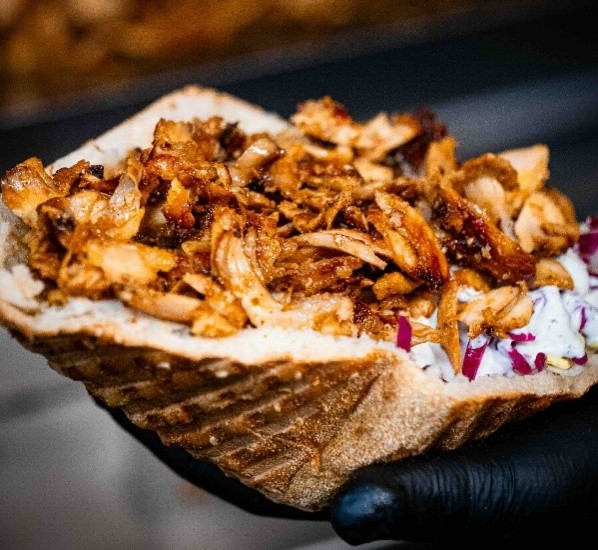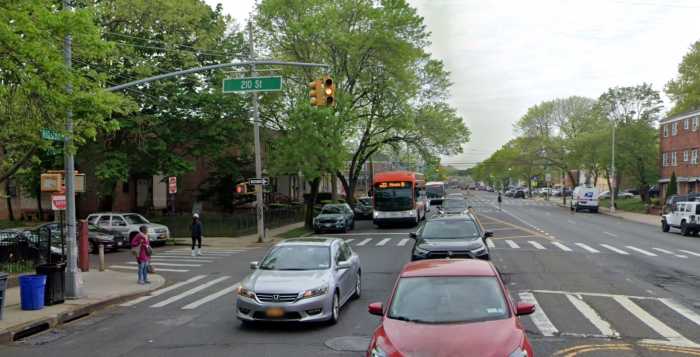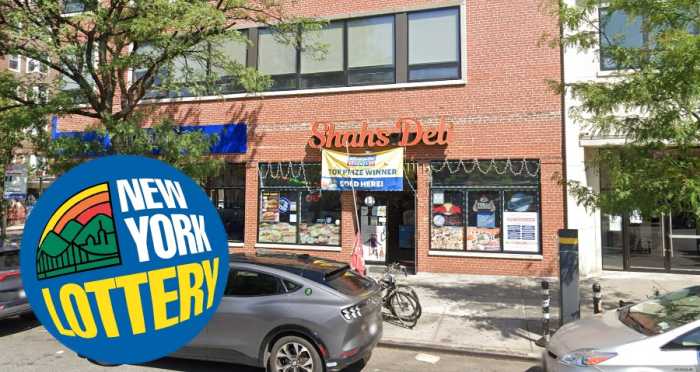By Betsy Scheinbart
Thousands of Queens trees will be injected with pesticides this spring in an effort to prevent the spread of the Asian Longhorned Beetle, with has already ravaged 5,000 city trees, U.S. Department of Agriculture officials said Saturday.
“If we don’t get a handle on this bugger, we are going to lose a lot more trees,” state Sen. Frank Padavan (R-Bellerose) told an information session on the beetle at the Alley Pond Environmental Center in Douglaston Saturday.
Padavan represents areas of northeastern Queens where the beetle has destroyed more than 800 trees, according to the New York City Parks Department.
The beetle probably came to New York City from China in wood packing around 1990. Last September, the USDA expanded quarantined areas to cover much of Queens County. The quarantine is intended to prevent the spread of bug-infested wood.
The bug has no natural predators in the United States and few in China. Beetles can fly several hundred of yards from tree to tree and there is currently no way to save an infested tree. They are chopped down and their remains are chipped and burned.
The beetles lay their eggs in maples, elms and other popular trees, where the larvae hatch and burrow their way through, slowly destroying the tree from the inside out, said Joseph Gittleman, the U.S. Department of Agriculture’s Asian Longhorned Beetle program director.
At the information session, Gittleman teamed up with Eugene Binder, a colleague at the USDA, Tom Russo, an arborist for the New York City Parks Department, and Naomi Zurcher from New York Releaf, a state-funded educational program.
The bug was discovered in Greenpoint, Brooklyn in 1996, and in Sunnyside and Ridgewood in 1997. Separate infestations were found in Bayside in February 1999 and Flushing in August 1999. Officials now know the bug was in Bayside in 1992 because a homeowner photographed it that year on her patio.
Adult beetles are black, almost blue-black, and shiny with white spots. Females, the larger sex, are up to 1 1/2 inches long. Their antennae are usually longer than their bodies and always banded with white stripes.
More than 9,000 New York City trees, many of them in Queens, will be injected with a pesticide this spring in a bid to control the spread of this destructive insect, Gittleman said.
Thousands of uninfested trees in Bayside, Flushing, and areas of Long Island City will be treated with the pesticide. Foliage in Flushing Meadows Corona Park will also be treated following the discovery last July of a beetle-infested tree there, Gittleman said.
The pesticide, imidaclopride, was tested on about 60 trees in Calvary Cemetery in Blissville in April 2000. Gittleman said it attacks neurons found only in insects and will not affect mammals.
The insecticide will be injected into the base of the tree, where it will be absorbed from the roots throughout the trunk and into its foliage by the time the adult beetles emerge from the pupa stage to feed on the tree’s foliage, Gittleman said.
The life cycle of the beetle requires it to eat before it mates, so when the pesticide kills the bugs, it will break the cycle.
The USDA expects to spend about $1.5 million on pesticide treatments in the city, which breaks down to about $70 per tree, depending on the tree’s size. If pesticide costs go down, more trees will be treated, Gittleman said.
Officials from the USDA and the state Parks Department will monitor the administration of the pesticide by private contractors. The injections will take about four hours per tree and small containers will dangle from the base during the process.
Meanwhile, the quarantine lines, which currently cover most of northern Queens, should soon be expanded to cover the entire northern swath of the borough, Gittleman predicted.
Those who live within the quarantined areas are prohibited from transporting wood more than 1/4 inch in diameter out of the area and from planting the beetles’ favorite host trees, like elms and maples.
Beetle experts at Saturday’s meeting urged Queens residents to contact the city Parks Department if they suspect a tree is infested. Russo said calls are always appreciated, even it they turn out to be a false alarm.
Signs of an infestation can include dime-size circular holes in the bark made by the adult beetles when they emerge from the tree in the summer and holes made by the female when she lays eggs. Sap and digested wood may also leak from the tree as it is eaten by the hungry larvae.
If you suspect a tree is infested, call 1-800-201-PARK and certified inspectors will check the tree. Infested trees are cut down and reduced to wood chips, which are then burned.
If a tree on your property is cut down because of a beetle infestation, it will be replaced, at your request, by the city Parks Department.
Reach reporter Betsy Scheinbart by e-mail at Timesledgr@aol.com or call 229-0300, Ext. 138.


































